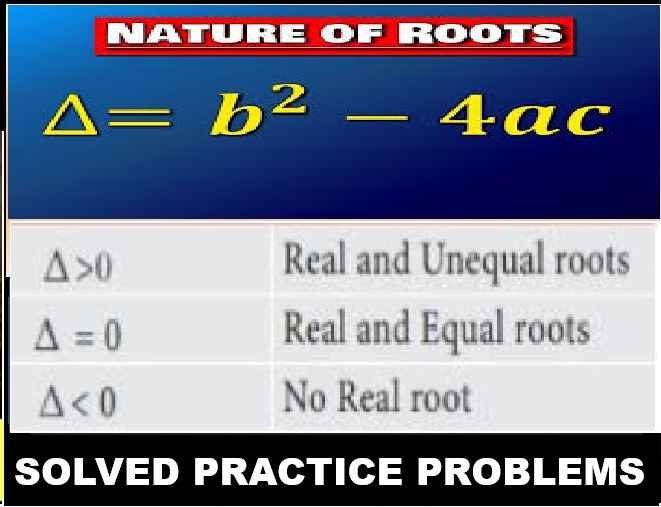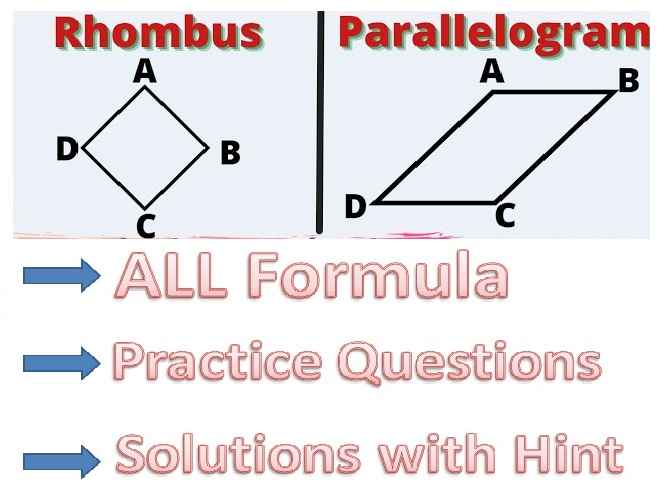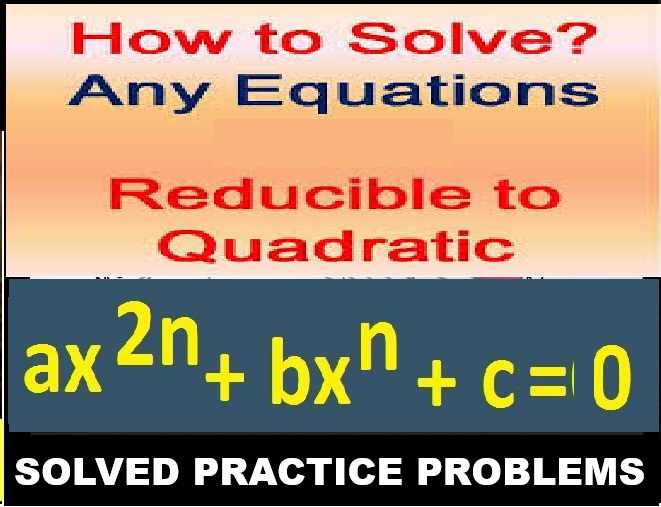Congruence Class-7 RS Aggarwal ICSE Maths Goyal Brothers Prakashan Chapter-21 Solutions. We provide step by step Solutions of Exercise / lesson-21 Congruence for ICSE Class-7 RS Aggarwal Mathematics.
Our Solutions contain all type Questions with Exe-21 A and MCQs Exe-21 B with Mental Maths to develop skill and confidence. Visit official Website CISCE for detail information about ICSE Board Class-7 Mathematics.
| Board | ICSE |
| Publications | Goyal brothers Prakshan |
| Subject | Maths |
| Class | 7th |
| Chapter-21 | Congruence |
| Writer | RS Aggrawal |
| Book Name | Foundation |
| Topics | Solution of Exe-21 A and MCQs Exe-21 B with Mental Maths to develop skill and confidence |
| Academic Session | 2021-2022 |
Congruence Class-7 RS Aggarwal ICSE Maths Goyal Brothers Prakashan Chapter-21 Solutions
-: Select Topic :-
Introduction
Congruent Figures :- Congruent figures are exactly equal in size and shape.
Congruent Triangles :- If all the sides and angles of a triangle are equal to the corresponding sides and angles of another triangle, then both the triangles are said to be congruent.
Criteria for Congruency
Criteria for Congruency of two triangles are:
(i) SSS Rule
(ii) SAS Rule
(iii) ASA Rule
(iv) RHS Rule
SSS Criteria for Congruency
If under a given correspondence, the three sides of one triangle are equal to the three corresponding sides of another triangle, then the triangles are congruent
SAS Criteria for Congruency
If under a correspondence, two sides and the angle included between them of a triangle are equal to two corresponding sides and the angle included between them of another triangle, then the triangles are congruent.
ASA Criteria for Congruency
If under a correspondence, two angles and the included side of a triangle are equal to two corresponding angles and the included side of another triangle, then the triangles are congruent.
AAS Criteria for Congruency
AAS Rule: Triangles are congruent if two pairs of corresponding angles and a pair of opposite sides are equal in both triangles.
RHS Criteria for Congruency
If under a correspondence, the hypotenuse and one side of a right-angled triangle are respectively equal to the hypotenuse and one side of another right-angled triangle, then the triangles are congruent.
Why SSA and AAA congruency rules are not valid?
Two triangles with equal corresponding angles need not be congruent. In such a correspondence, one of them can be an enlarged copy of the other. Therefore AAA congruency is not valid
If two triangles have two congruent sides and a congruent non included angle, then triangles are not necessarily congruent. Therefore, SSA congruency is not valid.
Exe-21 A,
Congruence Class-7 RS Aggarwal ICSE Maths Goyal Brothers Prakashan
Page 233-235
Question 1:
State the condition (SSS or SAS or ASA or R.H.S.) under which △ABC ≅ △PQR in each of the following cases.
Answer :
(i) In △ABC and APQR
AB PQ = 2.5 cm
BC = QR = 4 cm
CA = PR = 3.5 cm
△ABC ≅ △PQR
by the condition SSS
(ii) In △ABC and △PQR
AC = PR
AB = PQ
∠ABC = ∠PQR
△ABC ≅ △PQR (R.H.S. axiom)
(iii) In △ABC and △PQR
AB = PQ
∠A = ∠P
∠B = ∠Q
△ABC ≅ △PQR (ASA axiom)
(iv) In △ABC and △PQR
AC = PR
BC = RQ
∠C = ∠R
△ABC ≅ △PQR (SAS axiom)
Question 2:
State giving reasons, which of the following are pairs of congruent triangles. Write down the names of triangles with congruent sign in each case, wherever they are congruent.
Answer :
(i) In △ABC and △DEF
AB = DF (given)
∠B = ∠D (each 60°)
∠C = ∠E (each 50°)
△ABC ≅ △DEF (ASA)
(ii) In △ABC and △PQR
AB = PR (given)
BC = QR (given)
∠B ∠R (each 35°)
△ABC ≅ △PQR (SAS)
(iii) In △DHE and △PQR
HE = PQ (given)
DH = PR (given)
∠H = ∠P (each 90°)
△DHE ≅ △PQR (SAS)
(iv) In the given figure,
In △ ABC and △ PQR
AB = QR, BC = QP
and ∠B = ∠Q (each 90°)
△ ABC and △ PQR are congruent (SAS axiom)
(v) In △LMN and △XYZ
LM = XZ
MN = XY
∠M = ∠X
△LMN ≅ △XYZ (SAS)
Question 3:
State, giving reasons, whether the following pairs of triangles are congruent or not :
(i) △ABC in which ∠A- 50°, ∠B 60°, BC = 4.5 cm and △DEF in which ∠E = 60°, ∠EF = 4.5 cm ∠F= 70°
(ii) △DEF in which ∠E = 48°, DE = 6 cm, EF = 8 cm and △MNR in which ∠R = 48°, MN = 6 cm MR = 8 cm.
(iii) △KLM in which KM = 4 cm, ∠K = 75°, ∠M = 40° and △PQR in which PR =4 cm, ∠Q = 65°, ∠R = 40°
(iv) △ABC in which AB = 3 cm, ZA = 90°, BC = 5 cm and △KLM in which KM = 3 cm, ∠K = 90° cm, LM = 5 cm
Answer :
(i) In △ABC, ∠A = 50°, ∠B = 60°, BC = 4.5 cm and in △DEF, ∠E = 60°, ∠EF = 4.5 cm and ∠F= 70°
In △ABC,
∠C = 180° – (∠A + ∠B)
= 180° – (50°+ 60)
= 180° – 110°
= 70°
Now in △ABC and △DEF
BC = EF (each = 4.5 cm)
∠B = ∠E (each = 60°)
∠C = ∠F (each = 70°)
△ABC and △DFE are congruent (ASA axiom)
(ii) In △DEF, ∠E = 48° DE = 6 cm, EF = 8 cm and in △MNR = 48°, MN = 6 cm and MR = 8 cm
In △DEF and △MNR
∠E = ∠R (each 48°)
EF = MR (each 48°)
DE = MN (each 6 cm)
But this does not satisfy any axiom of congruency
So, These are not congruent
(iii) In △KLM, KM = 4 cm, ∠K = 75°, ∠M = 40° and in △PQR, PR= 4 cm, ∠Q = 65°, ∠R = 40°
∠P = 180° – (∠Q + ∠R)
= 180° -(65° + 40°)
= 180°- 105°
= 75°
Now in △KLM and △PQR
KM = PR (each= 4 cm)
∠K = ∠P (each 75)
∠M = ∠R (each 40)
△KLM ≅ △PQR (ASA axiom)
(iv) In △ABC, AB = 3 cm, ∠A =90°, BC =5 cm and in △KLM, KM = 3 cm, ∠K = 90° and LM = 5 cm
Now in right AABC and right △KLM
Side KM = AB (each = 3 cm)
Hyp. BC = ML (each = 5 cm)
△ABC ≅ △KML (RHS axiom)
Question 4:
In the given figure, AB = CD and AD = CB prove that :
(i) △ABD ≅ △CDB
(ii) ∠A = ∠C.
Answer :
(i) In △ABD and △CDB
AB = CD (given)
AD = CB (given)
BD = BD (common)
△ABD ≅ △CDB (SSS)
(ii) ∠A = ∠C (by C.P.C.T)
Question 5:
In the given figure,
∠SPR = ∠QRP and ∠RSP = ∠PQ
prove that:
(i) PQ = RS
(ii) PS = QR.
Answer :
In △PSR and △PQR
∠SPR = ∠QRP (given)
∠RSP = ∠PQR (given)
PR = PR (common)
△PSR = △PQR (ASA)
RS = PO
and PS = QR (by C.P.C.T.)
Question 6:
In the given figure, we have AO = BO and CO = DO.
Prove that :
(i) △OC ≅ △BOD
(ii) AC = BD.
Answer :
(i) In △AOC and △BOD
AO = BO (given)
CO = DO (given)
∠AOC = ∠BOD (vertically opposite angles)
△AOC ≅ △BOD (S.A.S.)
(ii) AC = BD (C.P.C.T.)
Question 7:
In the given figure, AB ⊥ BD, CD ⊥ BD and AB = CD.
Prove that:
(i) △ABD ≅ △CDB
(ii) AD = CB.
Answer :
(i) ln △ABD and △CDB
AB = CD (given)
BD = BD (given)
∠ABD = △CDB (each 90°)
△ABDE ≅ △CDB (S.A.S)
(ii) AD = CB (C.PC.T)
Question 8:
In the given figure, PL ⊥ OA and PM ⊥ OB such that OL = OM. Prove that.
(i) △ OLP ≅ △OMP
(ii) PL = PM
(iii) ∠LOP = ∠MOP
Answer :
In the figure,
∠L = ∠M 90, OL = OM
Now, in two right angles
△ OLP and △ OC MP
Hypotenuse OP = OP (common)
side OL = OM (given)
△ OLP = △ OMP (R.H.S. axiom)
(ii) PL = PM (c.p.c.t.)
(iii) and ∠LOP = ∠MOP (c.p.c.t.)
Hence proved.
Question 9:
In the given figure, we have PQ = SR and PR = SQ. Prove that:
(i) △ PQR ≅ △ SRQ
(ii) ∠POR = ∠SRQ.
Answer :
(i) In △PQR and △SQR
PQ = SR (given)
PR = SQ (given)
QR = QR (common)
△POR ≅ △5QR (SSS)
Question 10:
In △ACD and △BCD
AD = BD (given)
CD = CD (common)
△ACD ≅ △BCD (S.A.S.)
Question 11:
In the adjoining figure △ABC is an isosceles triangle in which AB = AC and AD is a median. Prove that:
(i) △ADB ≅ △ADC
(ii) ∠BAD = ∠CAD.
AB = AC (given)
BD = CD (given)
AD = AD (common)
△ABD = △ADC (S.S.S.)
∠BAD = ∠CAD (C.P.C.T.)
Question 12:
In the adjoining figure, △ABC is an isosceles triangle in which AB AC and AD is the bisector of ∠A Prove that:
(iii) BD = DC
(iv) AD ⊥ BC.
(i) In △ADB and △ADC (given)
AB = AC (given)
BD = DC (given)
AD = AD (common)
△ADB ≅ △ADC
(ii) ∠B = ∠C (C.P.C.T)
(iii) BD = DC (C.P.C.T)
(iv) ∠ADB = ∠ADC (C.P.C.T)
But ∠ADB + ∠ADC = 180° (Linear pair)
∠ADB = ∠ADC = 90°
AD ⊥ BC.
Question 13:
In the adjoining figure, △ ABC is an isosceles triangle in which AB = AC. If BM ⊥ AC and CN ⊥ AB, prove that:
(i) △BMC = △CNB
(ii) BM = CN
Answer :
In △ ABC,
AB = AC
BM ⊥ AC
and CM ⊥ AB
To prove:
(i) △ BMC ≅ △ CNB
(ii) BM = CN
Proof:
AB = AC
∠ACB = ∠ABC (opposite angles of equal sides)
Now in △ BMC and △ CNB
BC = BC (common)
∠ACB = ∠ABC (proved)
△ BMC ≅ △ CNB (AAS axiom)
BM = CN (c.p.e.t.)
Hence proved.
MCQs Exe-21 B,
Congruence Class-7 RS Aggarwal ICSE Maths Goyal Brothers Prakashan
Page 235-236
Choose the correct option in each of the following :
Question 1:
Two figures are said to be congruent if they have the Name
(a) shape
(b) size
(c) shape and size
(d) area
Answer :
Same shape and size. (c)
Question 2:
The symbol for congruency is
(a) =
(b) ≡
(c) ≈
(d) ≅
Answer :
Symbol ≅ is used for congruency. (d)
Question 3:
Two Line segments are congruent only if
(a) they have at least one end point common
(b) they are equal in length
(c) they are equal in length and parallel to each other
(d) they have coincident end points
Answer :
Two line segments are congruent if they are equal in length. (b)
Question 4:
Two angles are congruent if they have
(a) a common vertex
(b) a common arm
(C) the same measure
(d) equal lengths of their arms
Answer :
Two angles are congruent if they have the Same measure. (c)
Question 5:
Two circles are said to be congruent only if
(a) they have the same centre
(b) they have the same radius
(c) they have the same centre and same radius
(d) they have the same radius and lie on different planes
Answer :
Two circles are said to be congruent only if they have the sane radius (b)
Question 6:
Which of the following is not a condition for triangles to be congruent ?
(a) SSS
(b) SAS
(c) ASA
(d) AAA
Answer :
AAA is not a condition for congruency of two triangles. (d)
Question 7:
If AABC ≅ △DEFE, then
(a) AB = DF
(b) BC = EF
(c) AC = DE
(d) All of these
Answer :
If △ABC ≅ △DEF, then
AB = DE, BC = EF and AC = DF (b)
Question 8:
Two triangles are congruent. Between them, which of the following can be different?
(a) area
(b) perimeter
(c) shape
(d) orientation
Answer :
Two triangles are congruent. Between them, orientation can be different. (d)
Mental Maths
–: End of Congruence Class-7 RS Aggarwal Solutions :–
Page 236
1. Fill in the blanks :
(i) Two triangles having corresponding angles equal are always…………..
(ii) Two squares are congruent if they have ……………….
(iii) If two triangles are similar, then they have corresponding ……………….. equal.
(iv) If two triangles are congruent, then they have corresponding ……………… equal.
(v) Two congruent triangles are always ……………………
Answer :
(i) Two triangles having corresponding angles equal are always similar.
(ii) Two squares are congruent if they have same side length.
(iii) If two triangles are similar, then they have corresponding angles equal.
(iv) If two triangles are congruent, then they have corresponding sides and angle equal.
(v) Two congruent triangles are always similar.
2. Write true (T) or false (F):
(i) All squares are congruent. .
(ii) in All concentric circles are congruent.
(iii) It two squares have equal areas, they are congruent.
(iv) It two figures have equal areas, they are congruent
(v) If two equilateral triangles are equal in area, they are congruent.
(vi) the hypotenuse and an acute angle of a right triangle are equal to the hypotenuse and corresponding acute angle of another right triangle, then the triangles are congruent
[Hint: The two triangles have one side end two angles equal]
Answer :
(i) False
(ii) False
(iii) True
(iv) False
(v) True
(vi) Ture
Return to- RS Aggarwal Solutions for ICSE Class-7 Goyal Brothers Prakashan
Thanks



Thanks it help me a lot
ok
I am not able to understand congruence 5 sum
call 8957797189